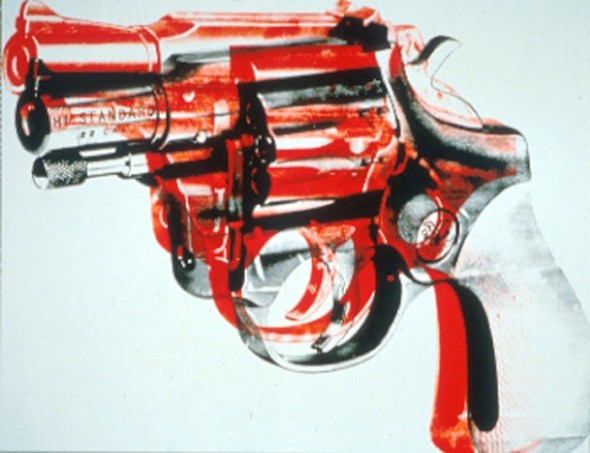Bang bang club

Rachel Kushner curates The Flamethrowers.
I wanted to conjure New York as an environment of energies, sounds, sensations. Not as a backdrop, a place that could resolve into history and sociology and urbanism, but rather as an entity that could not be reduced because it had become a character, in the manner that a fully complex character in fiction isn’t reducible to cause, reasons, event. I looked at a lot of photographs and other evidentiary traces of downtown New York and art of the mid-1970s. Maybe a person is a tainted magnet and nothing is by chance, but what I kept finding were nude women and guns. The group Up Against the Wall Motherfuckers, who figure in the novel, papered the Lower East Side, in the late 1960s, with posters that said, LOOKING FOR PEOPLE WHO LIKE TO DRAW, with an image of a revolver. I had already encountered plenty of guns in researching Italy — the more militant elements of the Autonomist movement had an official weapon, the Walther P38, which could be blithely denoted with the thumb out, pointer finger angled up. I would scan the images of rallies in Rome, a hundred thousand people, among whom a tenth, I was told by people who had been there, were armed. Ten thousand individuals on the streets of Rome with guns in their pockets. But among New York artists, I hadn’t expected guns, and yet that’s what I encountered: lots of guns, and as I said, lots of nude women. Occasionally in the same image, Hannah Wilke in strappy heels holding a petite purse pistol— like Honey West, except naked. But mostly it was men posing with the guns: William Burroughs, William Eggleston, Sandro Chia, Richard Serra. Warhol’s gun drawings. Chris Burden out in Los Angeles having a friend shoot him. And women with their clothes off: Carolee Schneemann, Hannah Wilke, Francesca Woodman, Ana Mendieta, Marina Abramović, who was both nude and with a loaded gun pointed at her head (by a man). What does all this mean? Many things, I’m sure, but for starters, it means people were getting out of the studio. Art was now about acts not sellable; it was about gestures and bodies. It was freedom, a realm where a guy could shoot off his rifle. Ride his motorcycle over a dry lakebed. Put a bunch of stuff on the floor—dirt, for instance, or lumber. Drive a forklift into a museum, or a functional racecar. But that’s art history. For the purposes of a novel, what did it mean? I was faced with the pleasure and headache of somehow stitching together the pistols and the nude women as defining features of a fictional realm, and one in which the female narrator, who has the last word, and technically all words, is nevertheless continually overrun, effaced, and silenced by the very masculine world of the novel she inhabits — a contra-diction I had to navigate, just as I had to find a way to merge what were by nature static and iconic images into a stream of life, real narrative life.
[Via]
